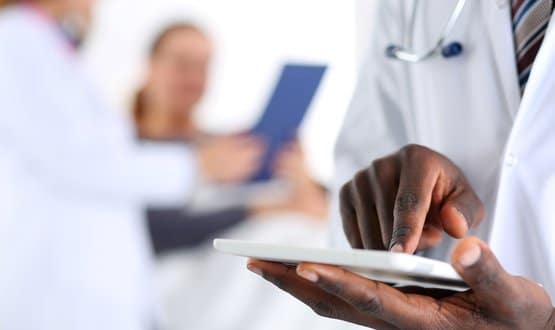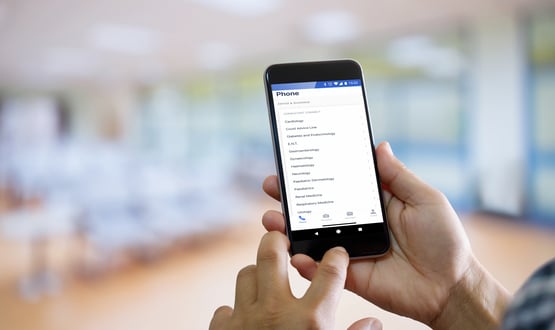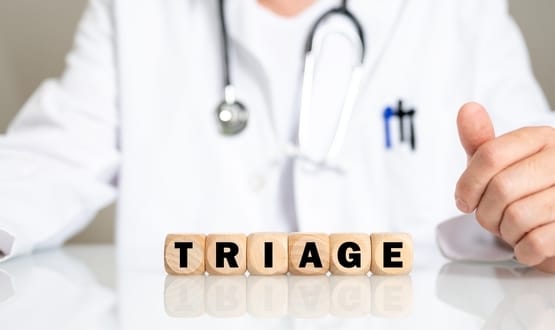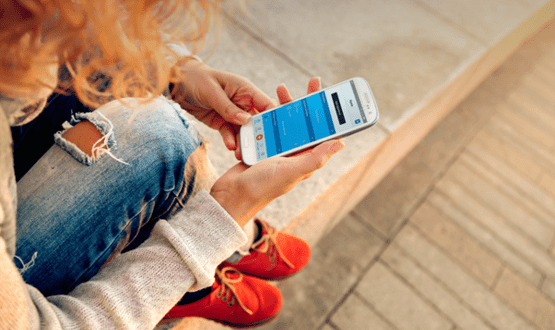Video triage system developed by Kingston University
- 30 January 2019

A new video streaming service that allows A&E doctors to triage patients before they arrive at hospital is being developed.
The 5G-enabled system will provide live footage of patients being transported to hospital in ambulances, enabling clinicians to decisions on their care in advance.
The project is being developed by Kingston University in London and Internet of Things (IoT) company, Pangea Connected.
Professor of wireless communications, Christos Politis, and associate professor, Dr Nada Philip, are leading on the project for Kingston University.
Professor Politis said: “The idea is to give doctors and surgeons a virtual environment to see what they are dealing with in real time.
“It could help with triaging care or even allow medics to advise ambulance crews on treatment, improving chances of survival in life or death cases.
“It would mean medical teams know exactly what they are dealing with when the patient arrives at hospital, which would be a real game changer.”
NHS ambulance trusts responded to seven million separate incidents in 2017 alone and finding new ways to reduce patient turnaround time upon arrival at hospital could help alleviate levels of unprecedented pressure.
Dan Cunliffe, Pangea’s managing director, said: “By combining our connectivity, commercial expertise, and Channel access with the knowledge of Kingston University’s academics, along with access to its 5G testbed, we’ll pave the way for data transferal over powerful 5G networks.
“The solution will be the first of its kind in the world. It will completely transform how video and other data compression is used across industries and unlock fresh revenue streams for our partners and bring us a step closer to a 5G world.”
The research is being carried out through a Knowledge Transfer Partnership, a part government-funded programme.
More focus is being place on innovations in ambulances, with a report published in October 2018 stating there needs to be a ‘renewed emphasis’.





2 Comments
I was involved in a project trialling the use of a wifi-enabled TV system that combined video calls (both for medical consultations and care/wellbeing) with the recording and sharing of telehealth data. It was a neat solution that could assist the NHS with the care of the elderly/chronic home-based patients. Problem was an early pilot was in a remote valley in Cumbria. The participants had to be selected based on wifi ownership, excluding the mass of suitable older patients. Most had incredibly slow wifi due to location and distance from exchange. Use of 4g dongles as an alternative was either massively variable in performance or there was no signal at all.
So of course when a clinician tried to use the video call facility there was often no satisfactory performance.
Video consultations in remote rural locations feels like it should be part of the solution but as above the UK telecoms infrastructure scuppers it.
Great, however where this may have issues are two fold. Firstly we need a nationwide 5G network and secondly, rural areas of the UK still only receive 3G services. Mobile telecoms networks prioritise by population per area, it costs a fortune to build/ upgrade a cell site and its not worth it in more rural areas. This means many parts of the UK will remain 3 or 4G for many years to come. This is the standard model in the UK (world to be fair). So again only large towns and cities would see the full benefit. However a perfect use of 5G technology in the health industry.
Comments are closed.